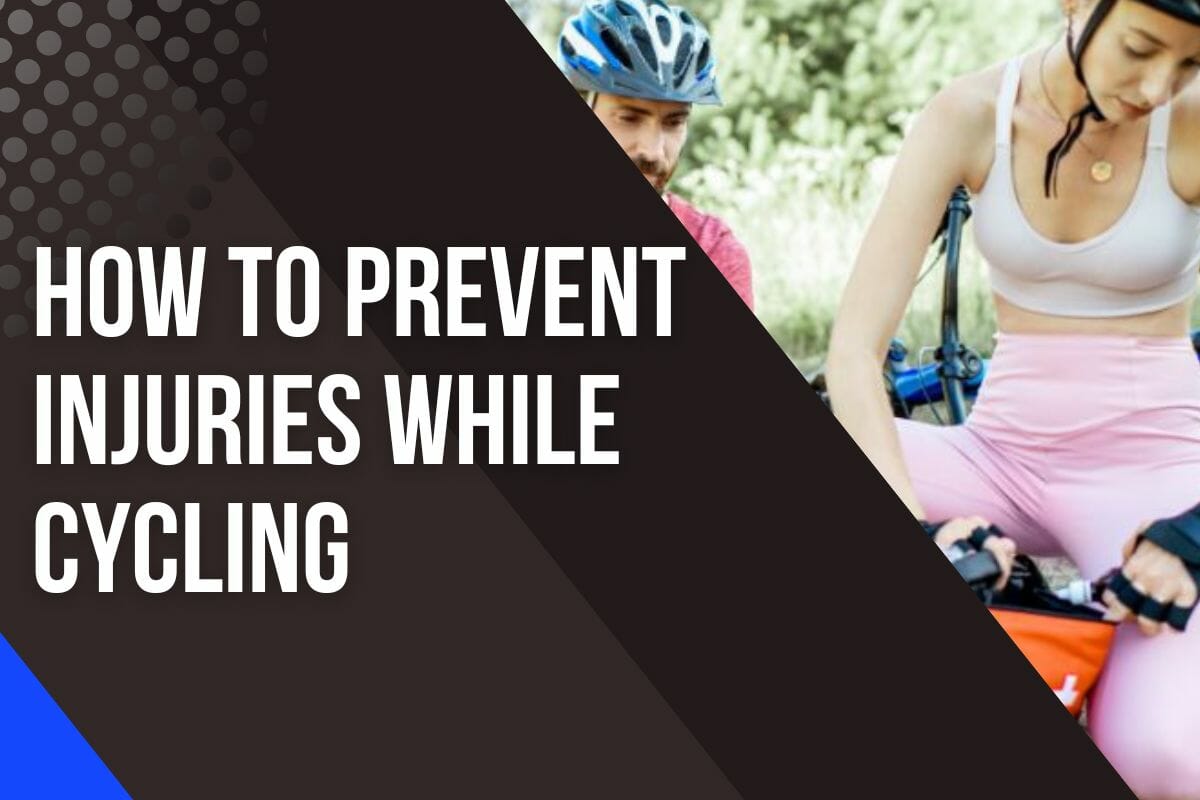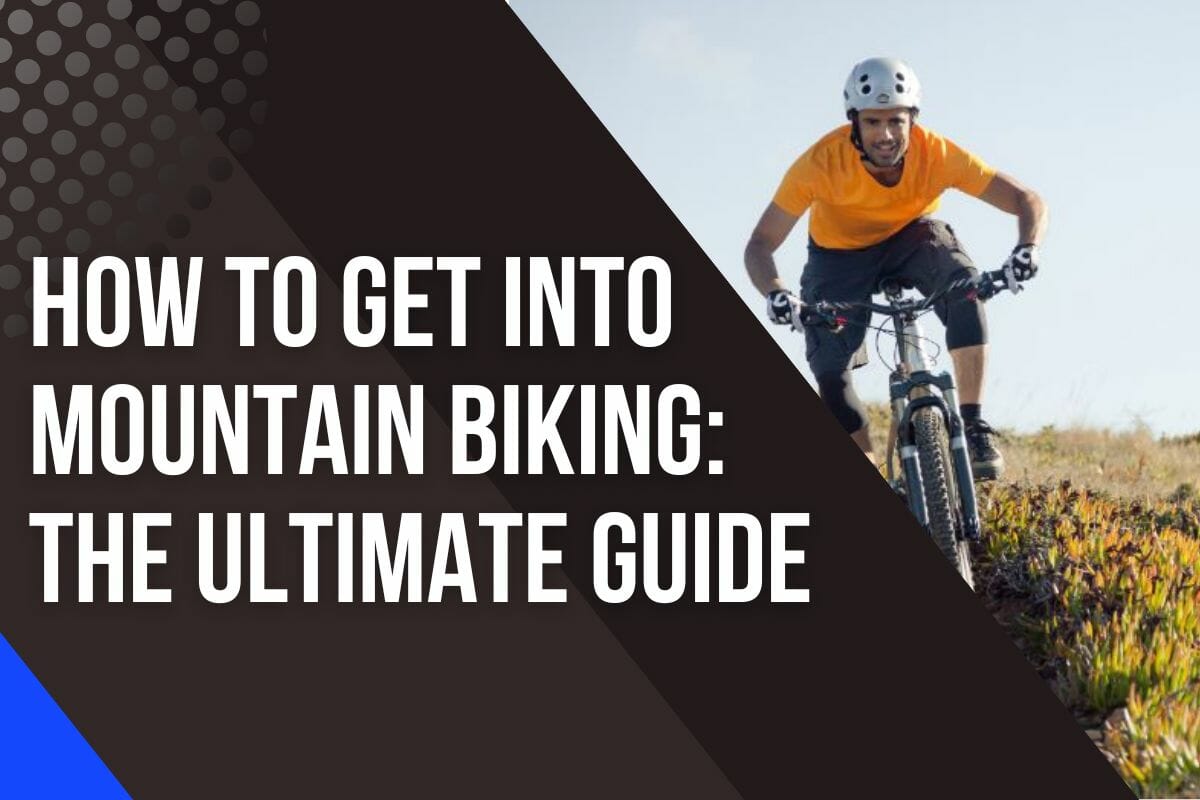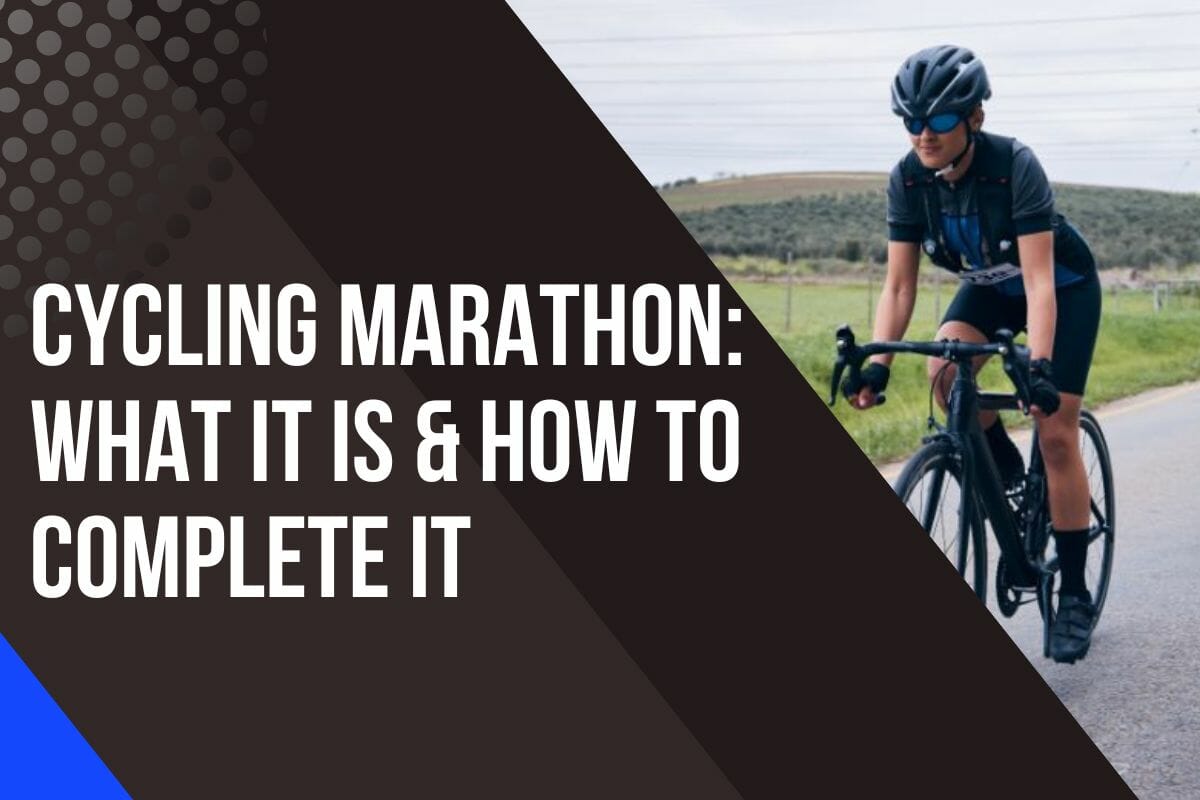How Far Should I Be Cycling? 7 Pro Tips For Biking Success

Cycling is a great way to stay active and keep fit.
It’s an enjoyable, eco-friendly form of exercise that can be enjoyed by people of all ages.
But how far should you cycle? That’s the question many cyclists ask themselves when they hit the road or trail.
In this article, we will cover five important factors when assessing how many miles you should bike each day, and provide seven pro tips for biking success.
So, grab your helmet, and let’s get started on our journey toward becoming cycling champions!
Recommended Daily Distance For Biking
Adults aged 18 to 64 need to work out regularly to stay physically fit.
According to Health.gov, they should do at least 2.5 hours of moderate-intensity physical activity each week.
This goal can be easily achieved with cycling.
While a general rule of thumb is to aim for 30-60 minutes of cycling each day, this can vary depending on personal factors like your goal, health/fitness level, biking experience, biking location, and type of bike.
For instance, if you’re a professional cyclist or training for an event, you should aim for 50-60 miles as part of your training regimen. However, if you’re a beginner or casual cyclist and are just looking to stay fit and explore the world around you, then 10 to 15 miles per day is considered good for the average rider.
My own personal approach is to find the sweet spot between my physical fitness and mental health.
I adjust my pedal stroke accordingly so that I’m not pushing myself too hard but also not being too lenient either.

I also take into consideration the terrain – if it’s hilly I’ll reduce the distance but if it’s flat I’ll increase it slightly.
This method has worked well for me as I’ve been able to stay in shape without compromising my mental well-being.
All in all, what matters most is finding what works best for you and maintaining consistency with your cycling routine on a regular basis!
5 Crucial Considerations To Find Out How Far You Should Cycle
When it comes to cycling, the question of how far you should go depends on several factors.
To ensure that you get the most out of your ride while avoiding injury or fatigue, consider these five elements below.
1. Tailor To Your Personal Goal
How far you should cycle depends on your personal goal.
Figuring out what kind of cyclist you want to become is the key to setting a realistic and achievable target.
My goal when it comes to cycling is to stay fit and healthy.
I want to ensure that I’m getting enough exercise on a regular basis, as this has both physical and mental health benefits.
To reach this goal, I generally aim for shorter distances of around 30-60 minutes at least 3 times a week.

This allows me to be mindful of my body’s limitations yet still get a good workout. For example, if the terrain is hilly then I may opt for an easier route with less elevation.
If your objective is efficiency as a commuter, then riding 15 miles each day would likely suffice.
On the other hand, aspiring competitors may require more intensity in order to remain sharp for upcoming events.
Understanding where you stand allows you to measure progress and stay motivated throughout the journey.
Set yourself up for success by taking small steps towards achieving it little by little.
2. Adjust The Intensity According To Your Health
As someone with a history of health issues, I have to be mindful of how far I should cycle each day.
Before beginning any type of exercise program, it is important to consult with your physician to make sure that you are medically cleared for the activity.
Additionally, it is important to consider any chronic conditions or previous injuries that might limit your ability to bike safely and comfortably.
When it comes to my own cycling experience, I try not to push myself too hard.
For example, if I am feeling tired or have an injury flare up then I will take it easy and reduce my distance or intensity.

On average, I will ride between 20-30 miles per day depending on the terrain.
Additionally, when biking up hills I tend to take more breaks as this helps me manage my breathing and prevents me from overexerting myself.
Finally, after every ride, I make sure to stretch properly so that my muscles can recover in time for the next ride.
While getting fit through biking, don’t forget about nutrition tips to keep you feeling energized throughout your ride!
Make sure you fuel your body properly so that you have enough energy for every pedal stroke.
This means eating foods rich in carbohydrates, proteins, and healthy fats before heading out on the road or trails.
Also, make sure you hydrate regularly during longer rides—water is essential for optimal performance during any type of physical activity.
3. Take Into Account Your Experience
As a beginner, it’s important to start slow and gradually increase the intensity as your body adjusts to the activity.
When choosing gear for your ride, comfort should come first.
As an experienced cyclist, I know that the amount of miles I can ride on a regular basis varies depending on my fitness level and type of bike.

The terrain and weather conditions also play a factor in how far I should be cycling.
If it’s windy outside or the terrain is hilly then it’s best to reduce my average cycling distance.
As a rule of thumb, I’ll keep my rides under 1 hour unless it’s flat terrain with no wind.
Finally, if I’m feeling stressed out mentally or physically then I may opt to take a shorter distance instead as this helps me stay focused and energized while riding.
4. Consider The Route And Path You Take
When deciding how far to cycle, it’s important to consider the route you’ll take.
Whether you’re a road cycling enthusiast or prefer biking trails and paths, there are plenty of options available.
Bike routes can be short loops close to home or longer trips that require more planning.
If you’re an experienced cyclist who likes long distances, then road cycling may be for you.

Roads offer dedicated bike lanes with less traffic, making them ideal for cyclists looking for a safe ride over great distances.
If hills aren’t your thing, look for flat roads and have fun exploring!
For those after an off-road experience, there are plenty of bike trails and paths available too.
These can provide scenery as well as challenges depending on terrain – so make sure to plan ahead when selecting your route.
Cycling is also popular in parks, where pathways are often shared by both cars and cyclists alike – so keep an eye out at all times!
No matter which type of route you choose, remember to stay hydrated while cycling and always wear appropriate safety gear like helmets and reflective clothing before hitting the open road.
Happy exploring!
5. Type Of Bike You’re Using
When it comes to cycling, the type of bike you choose can make a big difference in how far and fast you can go.
For instance, if I’m biking with a mountain bike or road bike, I can usually ride for about 30-60 minutes without feeling too exhausted.

On the other hand, if I’m riding an electric bike or hybrid bike, then I can usually go for longer distances as the motor helps me to pedal more efficiently.
Research shows that people who use electric bikes usually ride for longer and further compared to those riding regular bikes
Mountain bikes are designed for riding over rough terrain with large knobby tires for increased traction (although you can ride them on the road too).
Mountain biking might not be suitable for long distances since the combination of the heavy frame and soft tires make it difficult to go very fast or cover great distances quickly.
Touring bikes are built specifically for taking longer trips due to their lightweight frames and thinner wheels that allow them to roll faster.
These types of bicycles also come equipped with racks, fenders, and other accessories that enable riders to carry camping gear and supplies over greater distances than most other bicycle styles.
Road bikes provide cyclists with an efficient way to get from point A to point B while covering relatively long distances in a short period of time thanks to their narrow tires, aerodynamic design, and lightweight components.
Hybrid bikes combine aspects found in both road and touring models into one package, making them ideal for commuting around town or going out on weekend excursions without having to switch between different machines.
Is it Better to Ride Fast or Far? Tips For New Cyclists
While it’s important to build up both, I would suggest focusing on the latter first.
As you become more experienced and your physical fitness improves, then you can begin to add more speed to your rides.
Speed is an important factor in cycling but it shouldn’t be your primary focus as a beginner.
Instead, concentrate on building up your endurance and strength by gradually increasing the length of your rides over time.

When it comes to distance, don’t try to go too far too quickly.
If you’re just starting out, shorter distances are best so that you can slowly increase the length of each ride with time.
Even experienced cyclists often break up long rides into smaller sections so that they don’t tire themselves out too quickly.
If there’s hilly terrain involved, then take extra care and make sure that you are physically fit enough before attempting them.
Unlock the Joy of Cycling: 7 Pro Tips for Beginners
As a beginner cyclist, I understand how overwhelming it can be to get started.
It’s important to start slow, build up your endurance and strength over time and ensure you’re wearing the right gear for your ride.
Here are 7 pro tips that I’ve learned along the way.
1. Protect Your Head At All Cost
As you begin your cycling journey, it’s important to make sure that you are protected from potential head injuries.
As a cyclist, I can tell you firsthand that head injuries can be serious and even fatal, so it’s essential to always wear a helmet while riding your bike.
Whether there’s a law or not, wearing a helmet is essential for protecting your head from injury.

The best ones are those designed specifically for cycling, as they provide maximum protection without sacrificing comfort.
I always make sure to buy one with plenty of ventilation and an adjustable chin strap so that it fits securely on my head.
Also, make sure to replace your helmet every few years – the padding can wear out over time and reduce its effectiveness in preventing head injuries.
If you ever crash or drop your helmet, replace it immediately – even if there’s no visible damage as the inner foam could have been compromised.
2. Don’t Keep Pedaling In High Gear For Long Durations
Pedaling in high gear for long periods of time can be detrimental.
Not only is this hard on your knees and legs due to the increased energy output required at a faster pace, but also there’s an increased risk of injury if you are not careful.
It’s important to remember that we all have our own physical limits when it comes to how much pressure we can put on our bodies while cycling.
Avoiding high-gear pedaling helps us avoid fatigue quickly as well as maintain good form throughout the ride.

Making sure you use lower gears during climbs or long stretches allows better control over power output, making sure you don’t burn out early into your ride.
It’s also worth noting that pedaling at a high rate for an extended period can lead to fatigue, which could impair your judgment and increase the risk of an accident.
So always make sure to switch gears regularly and only pedal in high gear for short bursts.
By doing this you’ll reduce the risk of injury, remain alert on the roads, and have more fun out on your bike!
3. Proper Bike Fit Is Essential
Getting a proper bike fit is essential in order to enjoy comfortable rides.
Bicycle sizing depends largely on one’s height and leg length; however, there are other factors such as arm length and flexibility that play into determining the best bike size.
Bike fitting professionals use special tools and techniques to measure these elements to ensure optimum performance when riding.

Having a correctly sized bike helps you feel more confident while pedaling because you know that all components have been adjusted accordingly to suit your body type.
It also reduces stress on muscles since your posture will be aligned with the frame geometry so that you apply force evenly throughout each pedal stroke without overworking any muscle group.
I had been cycling for a few months before I realized this and it made me realize that the discomfort I was feeling in my back, neck, and legs was due to the fact that my bike was too big for me.
After getting fitted for a new bike, my experience immediately improved.
Not only was I able to ride further distances with less fatigue, but I also noticed an improvement in the speed at which I could go up hills.
Ultimately, having a properly fitted bicycle sets you up for success both physically and mentally.
4. Be Picky With Your Saddle Selections
Your saddle can make or break your ride (and body).
The best way to find out if a specific bike saddle works for you is by taking it on a test ride.
The first thing to consider when selecting a saddle is the type of bike you’re riding – road bikes usually require a narrower seat (less comfortable) than mountain bikes or hybrids.

If possible, try riding several different types of saddles over long distances before deciding which one to purchase; this will give you the chance to experience what works best for your needs.
It’s also helpful to read reviews from other cyclists who have tried different models, as they can provide valuable insight into what type of saddle offers maximum cushioning and support for longer rides.
5. Move Around Once In A While
It’s important to move around on the bike in order to get the most out of your ride and prevent numbness in your hands, arms, or rear.
It can be easy to forget to change your position while riding, especially if you’re out for a long ride.
But it’s important to move around in order to keep your body from becoming uncomfortable and sore.

I like to take a break every 30-60 minutes and switch up my hand placement on the handlebars as well as adjust my weight by moving my rear end on the saddle.
This not only helps keep me comfortable but also keeps me from getting too tired when riding for longer distances.
It also helps improve my pedal stroke efficiency so that I can cover more ground with less effort!
To ensure that you find an optimal bike fit for yourself, here are some tips on how to do it:
- Check your handlebars – Make sure that when reaching forward with hands on the bars, there is a slight bend in your elbows to keep them from locking out.
- Look at where you sit – When seated upright, ensure rear wheels don’t move so much underneath you; if they do then look into getting a new saddle or adjust yours accordingly.
- Adjust height – Your feet should be able to reach the ground without having to overstretch while pedaling; lower saddles can provide more power but higher ones may cause discomfort after long-term use.
- Change up hand positions – Don’t stay in one place too long! Alternate between different grips such as flat bar (climbing), bull horns (aerodynamics), or drops (descending).
6. No Headphones Allowed
We all know that safety is paramount when riding a bike, and one of the most important safety rules I live by is to never ride with headphones on.
Not only does it block out the sounds of traffic, other riders, and animals around you, but it also puts you at risk of not being able to hear emergency vehicles coming up from behind.

7. Always Obey The Traffic Rules
When it comes to cycling, I always make sure that I’m following the rules of the road.
As a cyclist, it’s important to remember that you have the same rights and responsibilities as any other vehicle on the road.
This includes obeying traffic signals, signs, and laws, as well as being courteous to other motorists and pedestrians.
I’m also sure to stay visible when riding by wearing bright colors and using lights when it’s dark or foggy out.
Additionally, I make sure my bike is equipped with reflectors so that I can be seen from a distance.

I always ride in a predictable manner so that other drivers know what to expect from me at all times.
I’ve learned that following these rules not only keeps me safe but also earns respect from other motorists who may be more likely to give cyclists more space on the road.
Even if you’re an experienced cyclist, it’s still important to review the rules of the road periodically to ensure you’re doing everything you can to stay safe while biking
My Verdict
The thrill of cycling is undeniable.
Frequent cycling can help keep your body healthy and strong – but don’t forget to take breaks!
Make sure you’re aware of the rules of the road so that every ride is as safe as possible.
If speed is what sparks your passion, practice will always pay off when it comes to improving your performance on two wheels.
No matter if you prefer leisurely loops around town or challenging cross-country treks, cycling has something for everyone.
So grab your gear and hit the open road – with some caution and commitment, who knows where your journey may take you?





